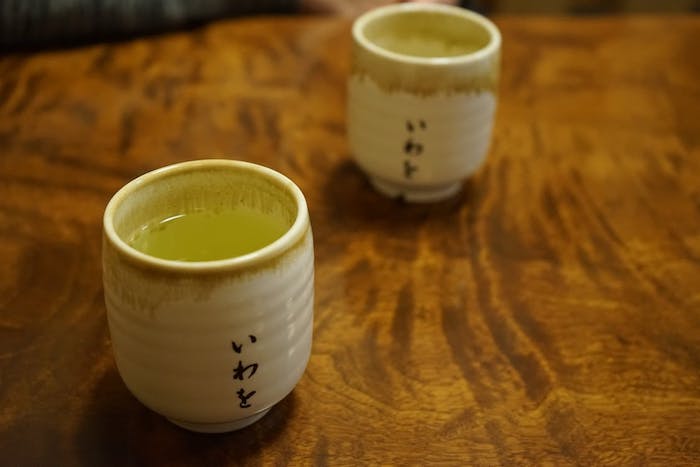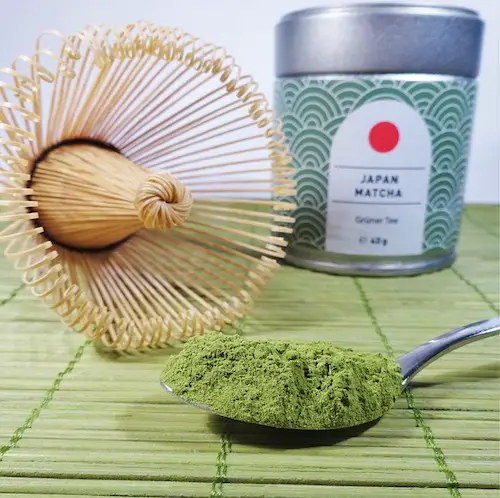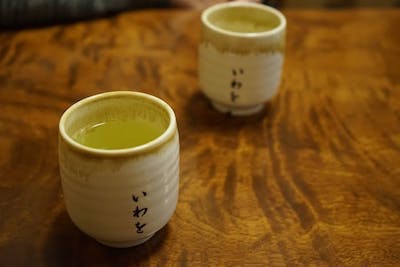We are reader supported. When you purchase through links on our site, we may earn an affiliate commission. Also, as an Amazon affiliate, we earn from qualifying purchases.

During my stay in Japan several years ago, I learned many good things such as perseverance and zeal for perfection that I try to imbibe in my lifestyle. One such thing that I follow and enjoy even today is drinking green tea – a refreshing and healthy drink that can be enjoyed at any time of the day.
When I am with my friends from western countries, I notice there’s a lot of confusion regarding the way green tea should be consumed. One such confusion is whether to sweeten or not to sweeten the green tea.
So, in this article, I have decided to tell you – do the Japanese put sugar in green tea? Traditionally, the Japanese do not add sugar to their green tea. It is not bitter in taste though. Ideally, it is brewed with slightly less than boiling water and served immediately to bring out delicate flavors.
In many parts of the world, people tend to sweeten their green teas but the traditional method does not involve adding sugar. You may however add a teaspoon of honey and blend it with exciting flavors like chamomile, jasmine, lemon, mint, and basil.
The color of authentic green tea is pleasant and the taste is subtle. It is usually served with Japanese dessert and also as the drink after a sushi meal at restaurants. Green tea and sushi complement each really well as the subtle flavor helps in cleaning the palate and some people say it also helps with digestion.
Contents
Green Tea Is more Than A Drink In Japan
The green tea is so deeply rooted in Japanese culture that it is often referred to as the Japanese tea. More than a mere drink, it’s more like a culture woven into their way of life. Also known as Sencha, this quintessential green tea is prepared with tea leaves.
Green teas are also available in other varieties – matcha, gyokuro, and kukicha. This depends on the way tea leaves are cultivated, their specific position on the plant, the amount of time they are steamed, the method in which they are processed and dried, etc.
Sencha is by the most common variety used for making green tea and it is produced from the youngest tea leaves that are steamed and then crumpled as they are dried. Since this method of producing Sencha was invented in the early 18th century, it has become the mainstream green tea served in Japan.
According to stats, more than 80% of the green tea produced and consumed in Japan is of Sencha variety. Out of the top 10 tea growing estates in Japan, four mainly produce Sencha and its different variations.
A Brief About History Of Green Tea
The history of green teas in Japan is centuries old. It is believed that the drink originated in China about 8000-9000 years ago. When the Buddhist monks returned to Japan after studying in China, they brought the young tea trees with them and propagated the benefits of drinking green tea.
In the Nara period (from 710 to 794) the exotic tea plants grown in Japan were considered as a delicacy reserved only for the noblemen and priests. They typically used the tea for their medicinal purpose. During the end of the Chinese Tang dynasty, the tea was transformed into a daily beverage.
The green tea traveled to the western countries in the 19th century and the credit for popularizing it goes to the European explorers. As it gained popularity and acceptance, green tea soon became the national beverage in Great Britain.
Soon after that green tea became popular in the US as settlers shipped it overseas. Interestingly, green tea was often called the bullet tea because the dried leaves resembled the shape of bullets when they were shipped.
Recipe To Make Japanese Green Tea
You will need:
- Green tea leaves (you will need 1 teaspoon for 1 cup of tea)
- Tea strainer
- 1 cup of water
- A stainless steel teapot
Pro tip: if you use the strainer to make regular black tea, it is important to wash and dry it thoroughly before using.
Instructions
Measure one teaspoon of green tea leaves for one cup. If you wish to make more than one cup, take out one teaspoon for each cup. Put the measured green tea leaves in the strainer and keep it aside
Now, take a stainless steel teapot measure water depending on the number of cups you wish to make. Boil the water to a temperature of 80°C to 85°C, make sure you do not exceed this limit because we need less than boiling water.
In case the water starts boiling, just remove the pot from gas stove and let it cool for 30-45 seconds.
Place the strainer containing the measured tea leaves over the cup. Start pouring the hot water and let the tea steep for at least 3 minutes.
This is a tricky step because the tea may quickly become too strong for your taste. I suggest keeping a spoon handy and tasting the tea in every 30-45 seconds to see if the flavor is right for you.
Take out the strainer/ sieve now and keep it aside. Japanese don’t add sugar to their tea, but sometimes one teaspoon honey may be added.
Stir the honey into the beverage and let the tea cool for a few seconds before you enjoy it.
Making Green Tea Using Tea Bags
These days people prefer green tea bags for their convenience of use and portability. Here’s how you can make yourself a cup of green tea anytime.
- 1 green tea bag like this
- 1 cup of hot water
- 1 stainless steel cup
- A stainless steel pot
- A lid to cover the cup
Heat water in a stainless steel pot up to around 80-85 degrees C. Be careful to not reach the boiling point. If it does by mistake, let it cool for some time.
Put the green tea bag into the cup and pour hot water over it. Cover with a small lid and let the green tea bag steep in the water for about 3 minutes.
Remove the lid and take the tea bag out of the cup. Stir the tea with a spoon and enjoy a refreshing sip.
Brewing With Green Tea Powder
Another easy method to make your favorite green tea is by using the tea powder. So, if the steep time confuses you, here’s a simple way to make green tea:
- 1.5 teaspoon green tea powder
- 1 cup of water
- 1 teaspoon honey
Take one cup of water in a stainless steel pot and bring it to 80-85°C. Don’t boil the water or else you will burn the powder.
Let the hot water cool for a few minutes and then add green tea powder to it. Let the powder soak in water for 3 minutes. Take a sip after 60 or 90 seconds to check if the flavor is good enough.
The watercolor will change to light brown after 3 minutes. Strain out the powered using a strainer.
You may add a teaspoon of honey to the tea and pour it into a cup.
7 Popular Varieties Of Green Tea
1. Sencha
This is the most common variety of green tea consumed in Japan. These leaves are grown in direct sunlight and they are typically harvested after the first or second crop. After being picked, the leaves are steamed, dried, and then rolled. They are believed to be of the highest quality and release an intense flavor.
2. Shincha tea
This type of green tea differs from the rest as it typically has the year of harvest mentioned. As this variety is made from the first crop, they are considered as the best quality. Despite a slightly bitter taste, it is one of the most sought after and expensive of all.
3. Matcha

This style of tea is made from a variety of green tea named Matcha and it is primarily grown in the shade. These specially grown leaves are then ground into a fine powder. As it is prepared in the latte method, it may often be sweetened with sugar. The Matcha tea is rich in antioxidants, mainly the catechins.
4. Funmatsucha tea
This variety also belongs to ground tea category but they may often have a bitter flavor. As this type of crop is not shaded from direct sunlight, they have a longer photosynthesis period resulting in the bitter flavor. Despite the strong taste, this type of tea contains more antioxidants than the standard ones.
See more: What is the difference of the Konacha, Funmatsucha and Matcha?
5. Gyokuro tea
This type of green tea has a sweet flavor hence there is no need to add sugar. The high levels of theanine, a particular amino acid in the beverage help in maintaining sweetness. Gyokuro tea leaves also contain higher levels of chlorophyll and caffeine due to specific processing.
6. Fukamushicha tea
This variety of green tea contains leaves from Gyokuro, Sencha, Kabusecha, and Bancha that are steamed and dried to get a deeper color brew. It also sports a richer flavor and has a soothing effect on the body.
7. Konacha green tea
This is the most popular variety served at sushi restaurants and is often referred to as agari. It mainly comprises of bits that are filtered from the buds during the Sencha and Gyokuro processing. This variety of green tea has a strong aroma and serves as a great food companion.
Tips For Brewing Perfect Green Tea
- Maintain the right ratio for green tea and water, which should be 3:5. It means 3 grams of green tea to 5 oz of water.
- Avoid tap water or distilled water as this can alter the taste of the beverage. I suggest using filtered water for making green tea.
- Water temperature should remain between 80 to 85 degrees C (170 degrees F) for best results.
- Allow a steep time of at least 2-3 minutes to get the subtle flavors without turning your drink bitter in taste.
Related Questions
Do the Japanese drink green tea every day?
Typically, the Japanese like to start their day with a cup of green tea and they may also enjoy it in their afternoon-break. Green tea is often served after a meal to help with digestion.
Why is green tea served at sushi restaurants?
In traditional sushi restaurants, you will mostly find green tea served with sushi. As a sushi meal contains vinegared sushi rice, soy sauce, and raw fish, a strong drink is needed to refresh the mouth and metabolize the salt you consume with soy sauce.
See Also:
How to Eat Onigiri (Rice Ball)?
My Favorite Rice Cooker And Pot
Sakai Takayuki Knives Reviews – 5 Favorites
Is Miso Soup Vegan? Revealing The Truth

